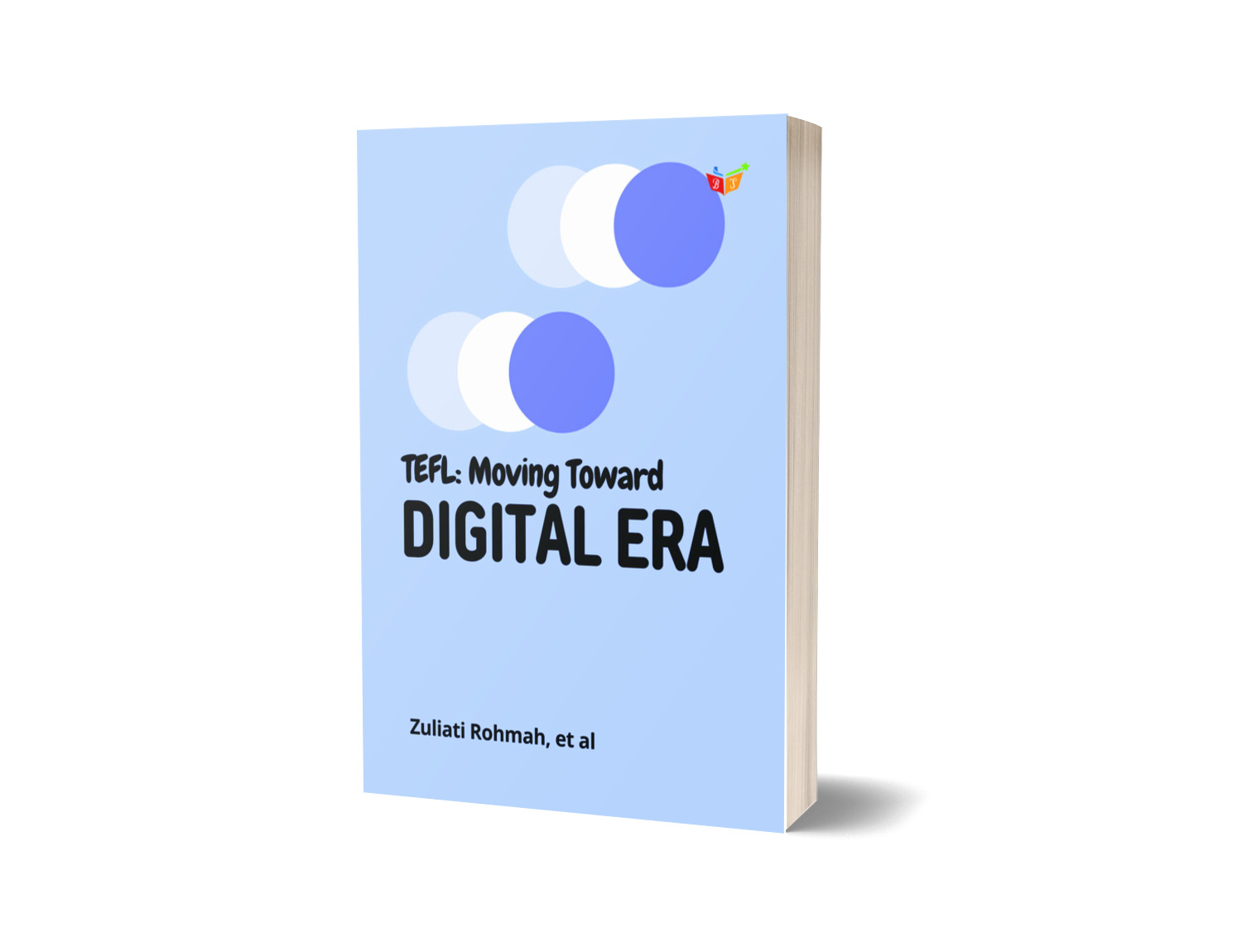
TEFL: Moving Toward Digital Era
Buku Referensi
Rp75000.00Rp67500.00
Out of stock
Karya: Prof. Dr. Zuliati Rohmah, et. al
Editor: Ive Emaliana, Iswahyuni & Tatik
ISBN : 978-602-1150-xx-x
Ukuran: 17.5 x 24
Halaman: x+259
Teaching English as a Foreign Language (TEFL) as the English language instruction for non-native speakers has undergone changes from time to time. Different methodologies have been introduced by practitioners of TEFL, for example, Grammar Translation Methods, Direct Methods, Audio Lingual Methods, Total Physical Response, Communicative Language Teaching, and Contextual Teaching and learning. More recent trend in TEFL presents the use of technology in the classrooms.
This book offers results of literature review of contemporary issues in TEFL. General issues on TEFL are presented in the first part of the book covering the discussion of the Emancipated curriculum and teachers’ roles, the effectiveness of differentiated instruction (DI) in EFL classes, the complexity of English as communication tool, the effects of Think-Pair-Share (TPS) strategy to promote EFL students’ English skills. Using twenty articles from various reputable journals, Wardah and Arum convince the readers of the effectiveness of DI in EFL classes. In the first article, they elaborate DI’s significant impacts on students’ achievement and learning motivation. The complexity of English as a means of communication is presented by Putra in the second article. Ubaidah in the third article further explore TPS by discussing positive impacts of TPS and how learners and teachers may have maximum benefits from the strategy.
Following the general issues of in TEFL, the book explores learning challenges and students’ motivation. Arsal investigates various challenges of students in diverse dimensions including the academic, socio-emotional, and institutional dimensions. Varied strategies are offered to face the problems, for instance, through peer support, resources enrichment, parental engagement, early identification of struggling students, and mental health and well-being promotion. Another article explores more specific challenges in Academic Writing Course. Similar to the previous article, this article also presents strategies to overcome the challenges, especially related to the course. Exploration on motivation has attracted Kurniati to focus on students’ motivation in rural areas which is highly significant. In addition to describing factors affecting the students’ motivation, she also explores strategies to increase the students’ motivation.
The rest of the book displays various digital media and technology applied in TEFL. The first part discusses the role of technology in general in inclusive EFL classes. Advantages and obstacles of technology uses in the classroom encompass the exploration. Next article investigates digital learning in rural areas which may empower the students to have better future. In the third article, AI is also discussed in relation to students’ writing skills where it may offer assistance in the form of feedback provision, useful suggestion, and grammar check. A review of Computer-Assisted Language Learning (CALL) to improve vocabulary and grammar retention is also brought by Hardian & Fadhilah. Specific strategies and more effective implementation of CALL are highlighted in the article. In addition to CALL, the book also describes the use of Mobile Assisted Language Learning (MALL) and its positive impacts on students’ language skills, language proficiency, and students' perceptions. More specific displays of various digital applications are put forth further in the book. Podcasts, YouTube, Quizziz, and Pear Deck are among the applications explored through this book. Several aspects of gamification on language learning are also surveyed to know its impact on language learners’ motivation, students’ perception on it, and its effectiveness to enhance students’ reading skills.
